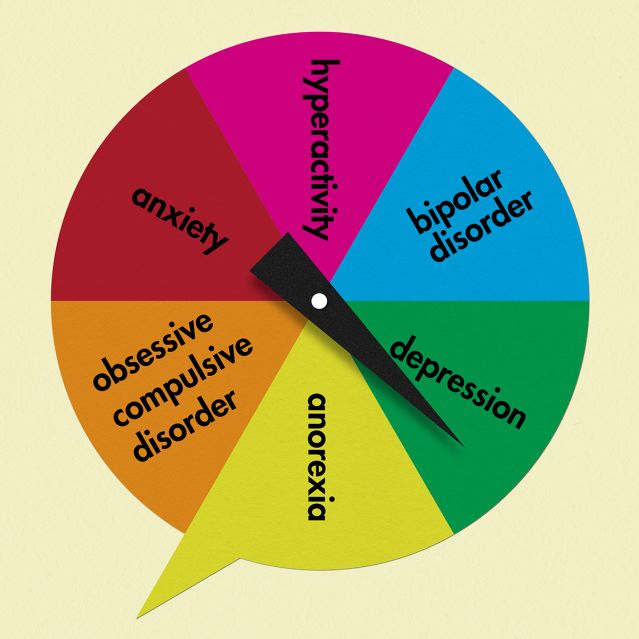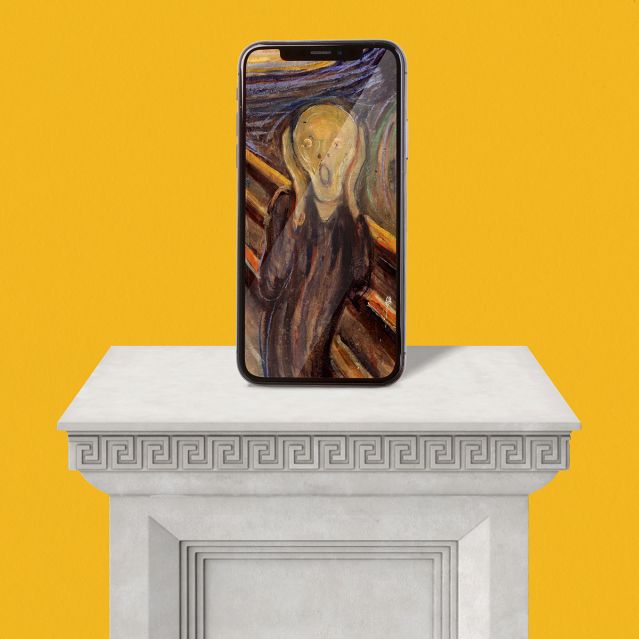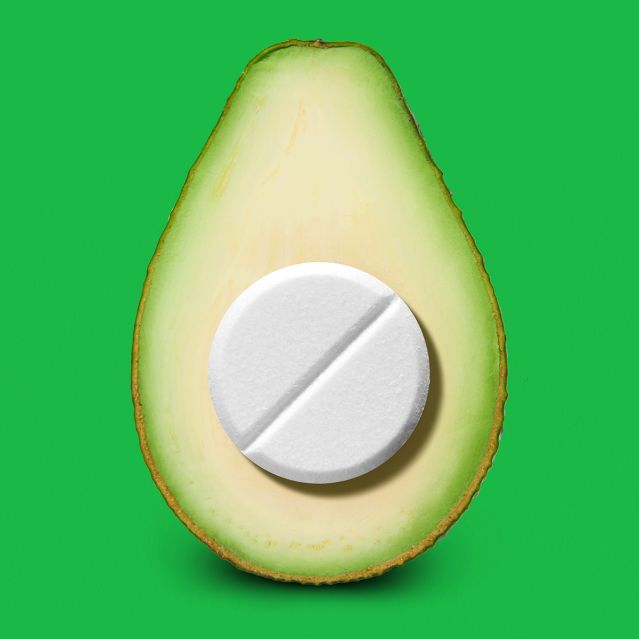5 Big New Trends
Mental health is suddenly, you might say, on everyone’s mind. And a lot is going on inside the world of mental health.
• Diagnosing yourself
• Have you met the CHO?
• The body makes a comeback
• Trauma’s time
• The other, even bigger, promise of psychedelics
By Psychology Today Contributors published January 4, 2022 - last reviewed on January 11, 2022
The Curious Cachet of a Psychiatric Diagnosis
Everyday stress and distress are aiming for DSM gravitas.
By Ralph Lewis, M.D.
Something strange has been happening in the psychiatric clinic in the last few years. Large numbers of people, particularly teens and young adults, have been seeking psychiatric assessments, certain that they are suffering from a mental illness and often quite insistent on obtaining a diagnosis for anxiety, major depression, ADHD, autism spectrum disorder, PTSD, and, perhaps most surprisingly of all, borderline personality disorder. Not that their life stresses aren’t challenging and their distress real, but their difficulties typically fall short of the criteria for diagnosis and seem within the range of normal.
What’s going on? How did we go from the destigmatization to the desirability of psychiatric diagnoses almost overnight?
Many people, the younger generation in particular, appear to be using the language of mental health and embracing the advice to talk openly about it. Overall this is welcome progress, but today’s youth seem to have replaced the use of words like stress and distress with terms like mental health issue or mental disorder. Maybe mental health education in schools is working better than anyone imagined, or celebrity confessions of struggles are highly influential.

Social contagion also seems to be powerfully at play. A potent and more prevalent factor than generally appreciated, it leads some people beyond merely overestimating and overstating their symptoms. They may develop psychiatric symptoms, or at least symptoms that appear to be psychiatric, through the power of suggestion and overidentification with others who truly display them. When young people with real disorders such as Tourette syndrome post videos of themselves on TikTok and YouTube as self-validating measures, there suddenly materialize in psychiatrists’ offices large numbers of young people with the identical tics.
Paralleling the diagnostic hopefuls crowding doctors’ offices, casual conversationalists outright appropriate psychiatric terminology on the street, flippantly describing ordinary stresses and behavioral quirks: “You’re so OCD.” “I’m so bipolar.” “I’m very ADHD.” “He’s totally on the [autism] spectrum.” While such talk is not necessarily meant to be taken seriously, it nevertheless fuels misunderstanding of the real disorders.
For those who more earnestly self-diagnose, doing so offers them an explanation for their difficulties. It lets a person feel understood. It simplifies complexity, helping make sense of things and bringing a bit of order to the inexplicable and chaotic. It provides validation and legitimacy to one’s struggle, and it might offer justification for one’s shortcomings or behavioral difficulties. It also confers a sense of identity and group-belonging. And it may deliver practical benefits: sick leave, disability benefits, academic accommodations, and insurance coverage for therapy.
It may be instructive to consider the strange desirability of a borderline personality disorder diagnosis. BPD used to be a highly undesirable and stigmatizing label because it indicates a highly dysfunctional, emotionally unstable person. The criteria overlap with other conditions and personality traits so it’s prone to overdiagnosis—especially among those who are self-diagnosing on the internet.
Perhaps part of its sudden unexpected appeal stems from the oversimplified notion that all mental disorders are illnesses, separable from the self—that they are things that happen to the brains of people, perhaps early in development, rather than (as is the case, particularly, for personality disorders) descriptions of who the person is. A diagnosis of BPD connotes someone who has become afflicted with a disorder—a victim—rather than someone who is a very “difficult person” (albeit due to factors partly beyond the individual’s control).
There are costs and risks associated with excessive appropriation of psychiatric terminology, eager self-diagnosis, and overdiagnosis by clinicians who take patients’ exaggerated reports of symptoms at face value: Medications are overprescribed, real mental illnesses become trivialized, psychiatry becomes delegitimized, and the people most in need of psychiatric services face difficulty accessing a system overloaded by unnecessary referrals.
Too, something important is lost in the linguistic inflation—the acceptance of stress and distress as inherent features of life. Perhaps life these days is more stressful than ever for young people—despite all the material advances and conveniences in modern Western societies, and despite living in peacetime. Many face increased expectations, competition, time pressures, choices, information overload, social media, and unprecedented awareness of physically and temporally distant societal threats.
Everyone feels lacking in coping ability and resilience at times. Psychiatric treatment isn’t the answer to that.
Most mental disorders lie at one end of a continuum in relation to normal traits and difficulties (and diagnoses are far less neatly categorical than the DSM-5 would make them appear). There is a wide grey zone in which a diagnosis may or not be applicable. Many people in this grey zone may indeed have significant psychosocial problems and may benefit from professional help. Diagnosis of a disorder doesn’t have to be the only ticket to get through a therapist’s door. If everyone has a mental disorder, then no one does, and the concept of mental illness becomes meaningless.

A New Doctor In the House
Pushed by the pandemic, companies are promoting employee health and well-being to the C-suite.
By Gleb Tsipursky, Ph.D.
There’s a new member of the C-suite in companies across America. Say hello to the CHO, the chief health and wellness officer. In a development underway before, but vastly accelerated by, the pandemic, the physical and mental health of employees seized top priority—because without it, productivity ceased and companies couldn’t even do business.
If the CHOs’ first order of business was deciding whether or how to operate in a pandemic or when and how it was safe to reopen, they are enduringly fixed on safeguarding the mental health of workers at home and ensuring they don’t burn out. As ongoing members of the C-suite, they guarantee that mental health gets attention beyond the largely peripheral yoga class and meditation moments. The across-the-board spike in stress and anxiety levels, the sudden awareness of the extraordinary demands on working parents, and the blurring of work-life boundaries mandate an ongoing orientation to how the structure of work interacts with employee health and wellness.
There’s plenty of bottom-line rationale. Healthy employees are not only engaged and productive, they also keep medical insurance costs down.
The role isn’t completely new. In fact, Goodyear Tire and Rubber Company, based in Akron, Ohio, with 65,000 workers worldwide, brought on a CHO a decade ago, in 2011, to develop the company’s global health strategy and provide leadership for its medical clinics, health benefits and programs, and health-related emergencies.
Over his 10 years of service, Brent Pawlecki, M.D., not only created special initiatives to acknowledge workers who are caring for the sick or elderly but also literally helped create a healthy environment when the company built its new headquarters. And when the pandemic struck, he was able to quickly coordinate policies with public health authorities.
Prompted by the pandemic to grasp the importance of health and wellness and to adapt to quickly shifting health realities, many more companies—Delta Airlines, Constellation Brands, Stanley Black & Decker— have brought on a CHO. Executive search firms report it’s a “burgeoning area” of business.
In addition, CHOs are getting attention at the highest levels worldwide. Last fall, the World Economic Forum announced that it was establishing a new cross-industry community of chief health officers to share visions and best practices because, it said, well-being matters more than ever: “Workforce well-being has become a business priority. There is increased awareness of its links to business performance, operational resiliency, and sustainability.”
Calling the pandemic “a wake-up call for employers,” the WEF also pointed to deeper problems underlying the increased anxiety, stress, and physical ill-health employees are reporting. It specifically cited systemic racism, massive job losses in some sectors, unpredictability of working conditions, and burnout.
Reporting directly to the CEO, CHOs work with other senior executives to develop and implement strategic policies that take care of employees’ overall health, as well as remote work guidelines and in-office safety. CHOs also enforce existing mental health policies designed to help employees achieve work-life balance. The difference is, the efforts are significantly more targeted and organized with a central figure in charge.
Organizations can also expect CHOs to do a deeper dive on issues driving mental health problems, including racism and gender discrimination, that contribute to toxic work cultures.
The advent of top executives who make mental and physical health a priority in business is worth celebrating. It’s just a little too soon to know how big a difference they can make.

Romancing Trauma
We’re enamored of stories of suffering because they’re loaded with drama. Most, however, do not reflect real trauma but a failure to metabolize big experiences.
By Robin Stern, Ph.D.
“I moved closer and asked him to tell me more,” the coaching trainee said. “I felt drawn into the story my client was telling. I wanted to know every detail.” She couldn’t, she said, get enough of it. Asked to reflect on her reaction, she said she was riveted, just as she is “by all the pain and suffering, all the stories of trauma,” she hears in the course of a day.
In my psychotherapy practice and in conversations with audiences both national and international, I’ve observed that just the word trauma—and our visceral reaction to it—causes people to sit up and pay attention. It seems as if everyone is paying attention.
Since writing The Body Keeps the Score seven years ago, psychiatrist Bessel von der Kolk has seen his book on trauma spend more than half its life on bestseller lists. Canadian physician Gabor Maté, known for his work on addiction, which he sees as a misguided attempt to cure existential pain, valorizes trauma in The Wisdom of Trauma, a recent documentary widely seen on social media. Trauma, says Maté, results from disconnection from your authentic self, imposed on humans by living in culture—catnip to a generation in search of authenticity and broad enough to include everyone.
Calling trauma a disease transmissible from parent to child, New York psychiatrist Paul Conti weighed in recently with Trauma: The Invisible Epidemic: How Trauma Works and How We Can Heal From It. If anything, it’s an unabashed offering to the gods of romance, with an introduction by the queen of glamor, Lady Gaga, and a blurb by reality TV star Kim Kardashian. Echoing Maté’s message, Conti contends that we all have trauma because we all have pain.
Certain emotional or psychological constructs gain cultural currency at times. Is America just having a romance with the idea of trauma, much the way we were infatuated with happiness a decade ago? Stories of trauma are dramatic and compelling, as my trainee found. They have a strong emotional charge, and their delivery is usually emotionally freighted as well. Infused with energy, they deliver a dose of excitement, especially to the many growing up overprotected and experience-deprived and those socially isolated.
The problem is: Much of what people term trauma would not be clinically classified as such, says psychologist George Bonanno, a longtime researcher of trauma, grief, and resilience and the author most recently of The End of Trauma. There is trauma—and then there is stress or grief or very big feelings that many people have in response to life events. In the general public and even in the profession of psychology, he observes, “there is a sense that anything bad is trauma—anything that feels intolerable or even uncomfortable.”
There are more than enough experiences that potentially give rise to real trauma. Interpersonal violence. Losing your home and everything you own in a war or flash flood. But most events talked about as trauma are simply life experiences
—often, defining moments of deep significance—accompanied by psychological pain, as many experiences are until they are digested and metabolized, a process that normally takes time and skills of emotion regulation. People gravitate to tales of trauma because they are drawn to stories that simplify and electrify life.
Our own judgment is impaired when we allow ourselves to be entranced by stories of trauma. We plunge into our own feelings and risk ignoring the storyteller’s needs. But perhaps most of all, we short-shrift our own powers. We are far more resilient than we think or than we give ourselves credit for. “Most people are resilient,” Bonanno finds. “Some people are traumatized; some people recover. There are different trajectories.”
People underplay their resilience, he suggests, because “they assume they don’t have the magic traits they read about. They likely think of resilience the same way they think about trauma—in essentialist terms, as something that exists in nature. Thus, events are traumatic, and people exposed to these events are traumatized.”
Bonanno identifies multiple roots of our obsession with trauma. Most of our ideas about mental health now come from the clinical realm, but mental health professionals predominantly study and treat only those in distress. In addition, he says, we’re wired to look out for danger, and we are ever aware that it exists in the world.

Psychology From the Neck Down
It turns out that the body has a big say in what we do and who we are.
By Scott Anderson
Psychology is waking up from a long fever dream that the brain is a pure thinking machine and discovering that, instead, the brain is locked in an intricate embrace with the body. That not only opens the door to a whole new array of treatments, it also makes traditional attempts to separate the brain from its environment seem laughably misguided.
Consciousness is the culmination of billions of synapses firing throughout our brain, but it doesn’t stop there. Neuroscience is now busily revealing the brain’s extended connections to every part of the body. There is a fresh understanding that these links provide the context for our emotions, desires, and decision-making.
Information flows into the brain not only through all our senses but also from the vagus nerve as it snakes past all our organs, especially the gut. That visceral conversation runs two ways, mediated by a part of the brain, the insula, which is constantly anticipating our bodily needs and then directing us to fulfill them. This is the framework for all our thoughts and moods—so-called interoception.
It is becoming increasingly clear that from this network of nerves, we weave our sense of self and our relationships with others. It is how we connect with the world, the source of our feelings of love and belonging, of safety—or of threat. The vagus offers a pathway for healing the mind through the body.
Deep-breathing—a feature of yoga and many ancient Eastern practices of mindfulness—is turning out to be a deceptively simple tool for creating an inner state of calm. Like most organs, our lungs are on autopilot, but we can take the wheel. Deep breathing for a minute or so recruits the vagus to send an all-clear signal to the brain, en route slowing the heart, relaxing blood vessels, and smoothing out gut contractions—providing leverage over our inner world.
With an especially extravagant network of nerves—earning it the nickname “second brain”—the gut is home to trillions of microbes (composing the microbiome) that can, astonishingly, sense and produce neurotransmitters to converse directly with the brain. An unbalanced gut microbiome, a common consequence of the standard American diet, is a potent source of inflammation, which can lead to major depression and anxiety.
Sadly, this bodily conversation is muted, making it easy to pretend that our brains are disembodied. Nevertheless, the makeup of the microbiome can be manipulated by diet, and a produce-, fiber-, and
antioxidant-rich diet is now a necessary addition to the psychological toolkit.
There are yet other signs psychology is escaping the mind-body dualism Descartes saddled us with some 400 years ago, granting too much agency to the brain and not enough to the body. It’s now clear that the body performs countless computations and continuously confers with the brain, blurring cognitive boundaries. And under the general rubric of embodiment, there’s a powerful paradigm shift in understanding—and eventually in managing—how we think and feel.
The principles of embodied cognition and embodied emotion hold that we use the body as a resource to understand thoughts from fright to delight—“articulating” abstract concepts with hand gestures, for example—and it becomes a major part of how we learn, remember, and retrieve memories. That’s why we smile when we recall a funny event. As a corollary, we can consciously manipulate that context, say by forcing a smile, to change the way we react to events and store memories.
We don’t just use our hands and hearts, say some, we also use the environment around us—such as the alarming amount of information instantly available on our smartphones—to enhance our memory and cognitive powers. Externalizing our thoughts is a crafty way to overcome the cramped confines of our skulls.
Our superior brainpower, then, is scarcely a solo act. We’ve got it backwards: It’s not that the body is there to support the brain; the brain largely exists to cater to our bodily needs, no matter how dimly we perceive them. It appears to be true after all that psychological problems may not be all in your head—and that there may be many pathways to relieving them.

Big Trip
The second coming of psychedelics heralds a new model of mental health treatment.
By Hara Estroff Marano
It’s scarcely 2022, but mark your calendar for 2023. If all goes as many people and billions of investment dollars expect, the first treatment will be made available to do what no other has been able to accomplish—peel away an intractable mental health disorder and do it without the need for a lifetime prescription.
It’s not just that the prospect of a cure—for PTSD—centers on the use of a psychedelic agent, specifically MDMA, or 3,4-methylenedioxymethamphetamine, also called Ecstasy or Molly. If the dollars don’t outdazzle the data and trigger a backlash, the possibilities include a brightened outlook for numerous psychiatric afflictions, a new way of delivering drugs, and pharmacology that comes with compassion.
Although medical interest in psychedelics flared in the 1950s and ’60s, research and clinical use were forced underground in the ’80s by criminalization statutes. But plant-derived hallucinogens such as psilocybin and mescaline have a long history of safe use, largely in traditional cultures, in ritualized release from the constraints of the prefrontal cortex.
Perhaps no person has done more to restore them and their synthetic siblings, including MDMA, to respectability than Rick Doblin, who founded the Multidisciplinary Association for Psychedelic Studies (MAPS) as a nonprofit pharmaceutical company in 1986 and then got a Ph.D. in policy administration at Harvard in order to make psychedelics mainstream-credible. Enamored of MDMA since trying it in college, Doblin recruited scientists, developed protocols for studying psychedelics, and compiled evidence until MDMA-assisted psychotherapy for PTSD was granted a rare Breakthrough Therapy Designation by the FDA in 2017.MDMA is expected to be the first true hallucinogen legally prescribable. Results from a first set of randomized, placebo-controlled Phase 3 clinical trials for safety and efficacy, the prelude to official new-drug approval, published last June in Nature Medicine, show that after three large doses of MDMA, with therapy, spaced a month apart, two thirds of patients no longer meet the criteria for a diagnosis of PTSD. Patients are still getting better a year after their treatment has stopped.
“This is the opposite of what happens with pharmaceuticals,” says Doblin. “We think people learn how to process trauma. They don’t run from intrusive memories or trauma triggers; they’re able to work through them,” he explains. Evidence shows that MDMA reduces hyperactivity in the amygdala and increases connectivity between the amygdala and the hippocampus so that memories can be processed and put into storage and the past doesn’t constantly invade the present. It also releases oxytocin, boosting social reward areas of the brain.
Also in development around the world: ibogaine for treatment of cocaine and opioid addiction; MDMA for social anxiety and couple therapy; psilocybin and LSD for Alzheimer’s and other dementias; DMT for stroke recovery. At the furthest edge of psychedelic research lies the hope that the drugs not only improve quality of life but actually extend it.
Persuasive evidence there’d be few regulatory obstacles to psychedelics, MDMA’s “breakthrough” designation set off a gold rush: A whole psychedelic sector arose on financial markets, with about 400 for-profit companies angling for a niche by the end of 2021. They’re bringing mushrooms to market, searching for patentable molecules, establishing clinic networks for treatment delivery, creating trippy media for clinical settings, and more.
One of the earliest, Compass Pathways, set on establishing psilocybin as with-therapy treatment for resistant depression, was the first psychedelic stock to hit $1 billion valuation after the company, backed by PayPal’s Peter Thiel, went public in 2020. Thiel also put millions into starting Berlin-based Atai Life Sciences in 2018; it’s now the biggest psychedelic player of all.
Between 2019 and 2021 alone, investors unleashed $3 to $5 billion, says venture capitalist Richard Skaife, who set up The Conscious Fund in 2019 to expedite what many expect to be a paradigm shift in mental health treatment—the end of the “drug treadmill.”
“The vast majority of people who have supported the psychedelic space so far,” says Skaife, “are ultra-high-net-worth individuals who have had either a very negative experience with general health care after some trauma in the family or a positive interaction with psychedelics, usually in a nonmedical setting. We don’t have to do a lot of convincing.” Doblin says MAPS’s roster of donors includes some of the wealthiest families in America—Rockefellers, Buffetts, even a Koch. Skaife says he doesn’t just deploy capital but identifies conditions for which there is scientific plausibility for psychedelic treatment, then breeds a business based on that.
The delivery—under direct supervision by specially certified therapists— remains as important as the drug. It’s the intense psychotherapy that transforms MDMA, psilocybin, and other hallucinogens from an amusement (or a bad trip) into a medicine. Patients report that they get something deeply meaningful out of the altered consciousness—a sense of unity, of connection. Therapy allows them to incorporate that into an enduring shift in identity and to build a better self.
That accounts for one of the liveliest areas of investment: setting up networks of cushy clinics to administer the anesthetic ketamine now while awaiting approval of MDMA and psilocybin. New York–based Nushama has staked out the Northeast and opened “journey centers” that mix luxe settings with psychedelic-inspired accoutrements. The journey psychedelics make possible is deep into the self, says medical director Steven Radowitz. “They free you of who you think you are and catalyze your own healing power.” Private “journey parties” have become popular among the affluent, often inspiring psychedelic snobbery.
The “psychedelic space” now abounds with hucksters and hype. But at its core is a new therapeutic model that depends on just a few drug doses, delivered with extreme care. What has investors still salivating are reports of a billion people on the planet in need of help. No one fears running out of patients anytime soon.
Submit your response to this story to letters@psychologytoday.com. If you would like us to consider your letter for publication, please include your name, city, and state. Letters may be edited for length and clarity.
Pick up a copy of Psychology Today on newsstands now or subscribe to read the rest of the latest issue.
Facebook image: fizkes/Shutterstock
LinkedIn image: Basicdog/Shutterstock
